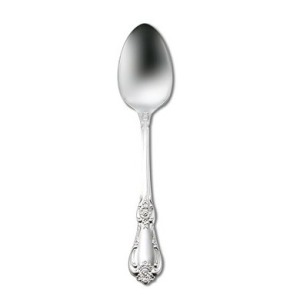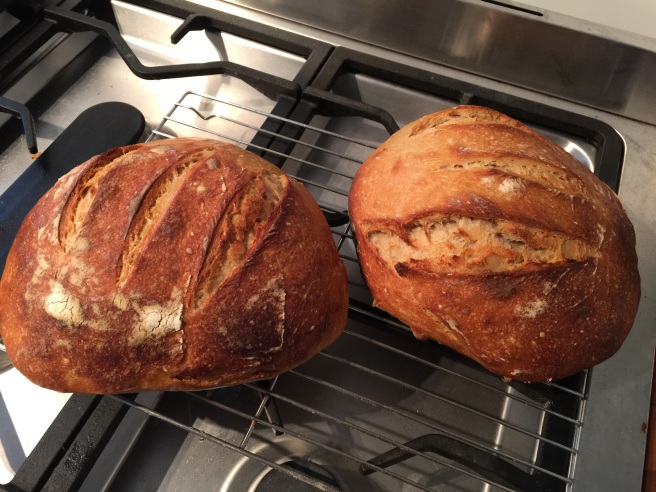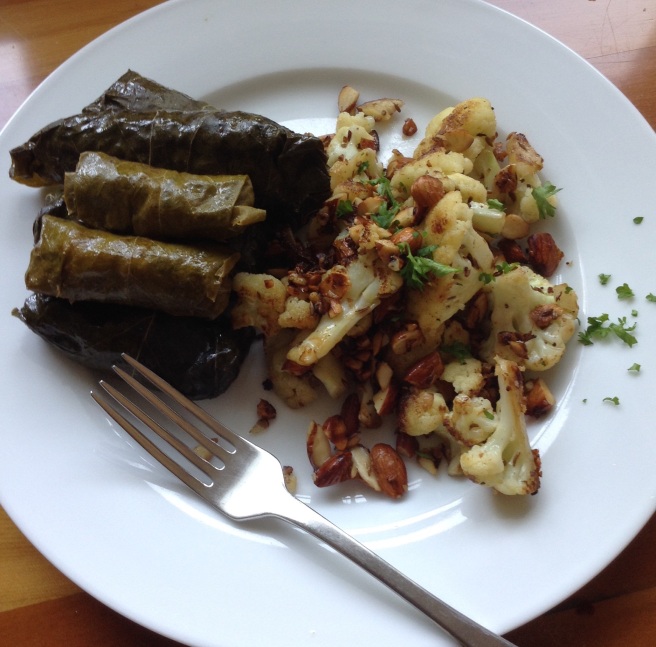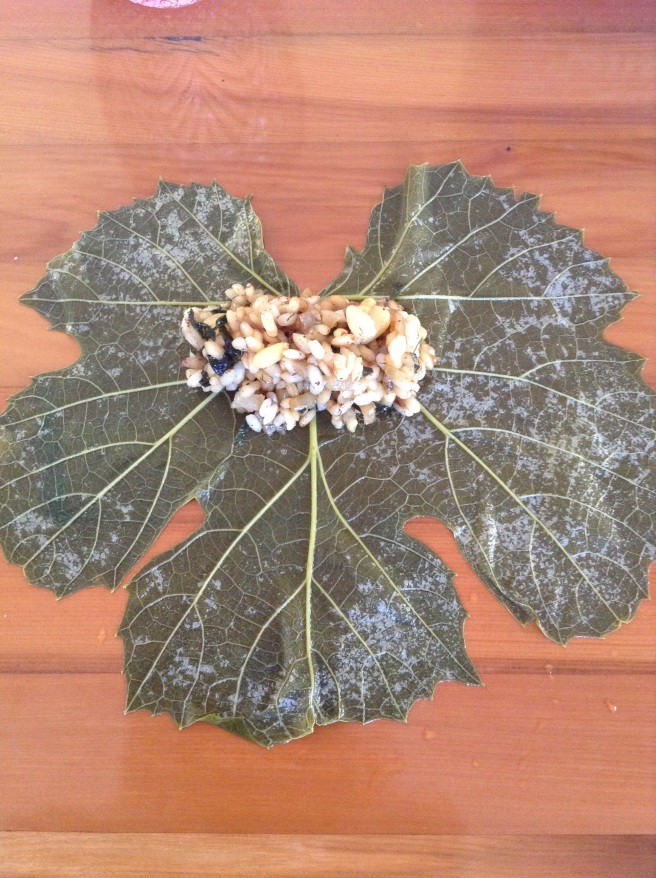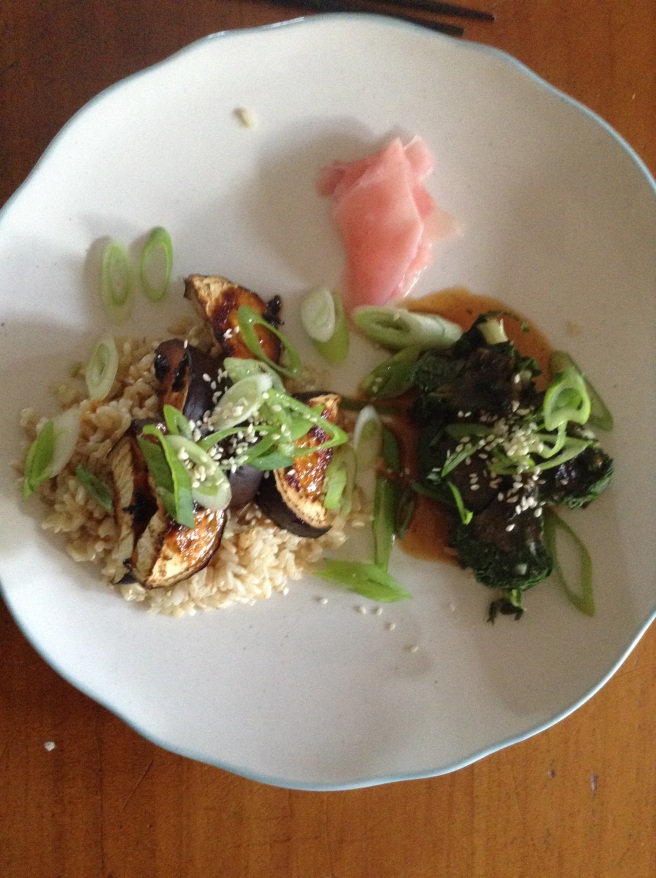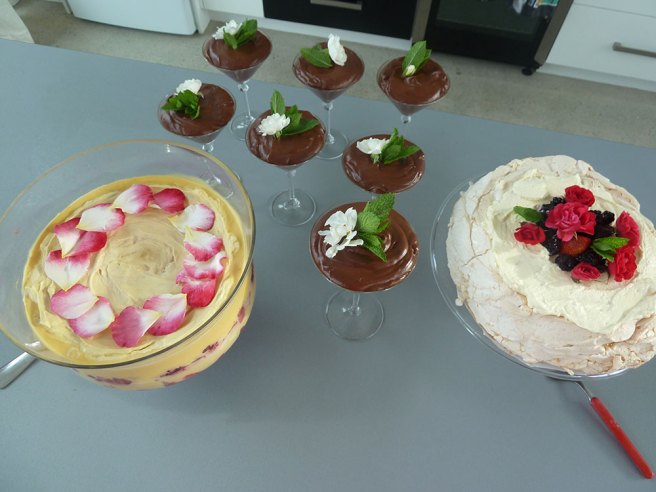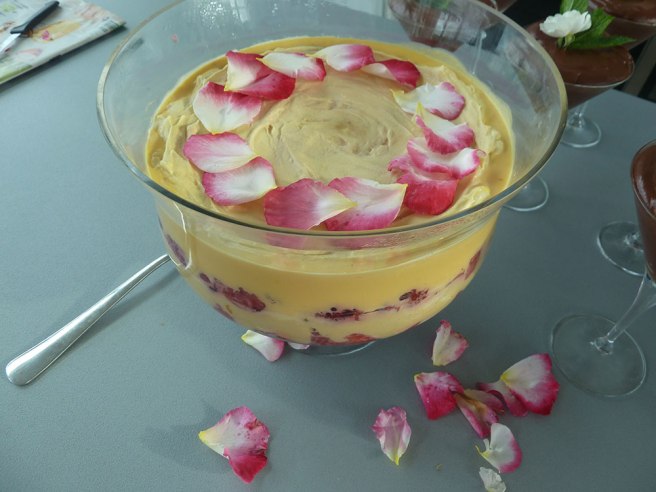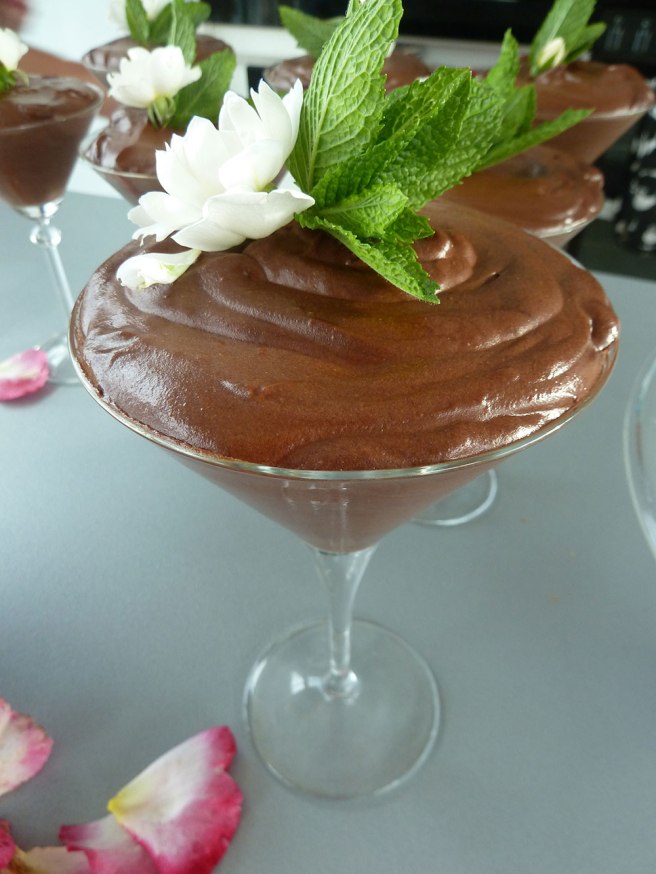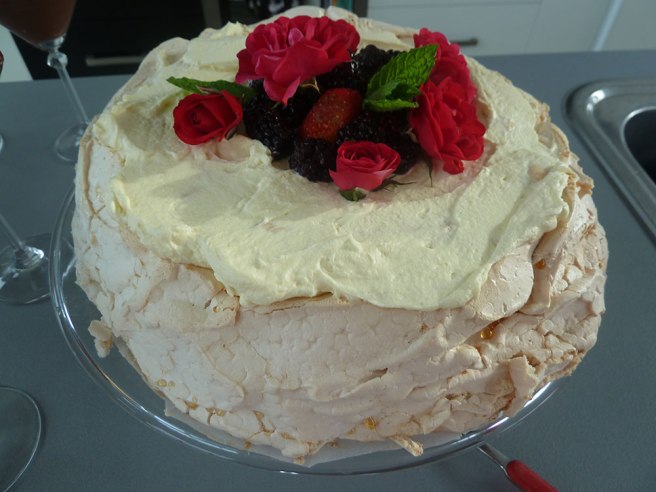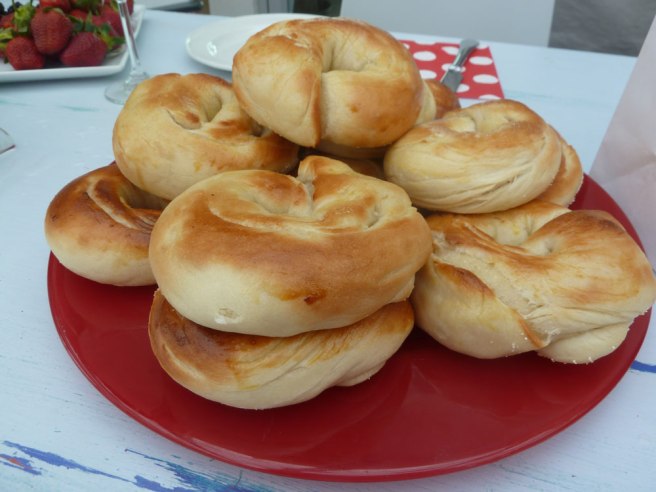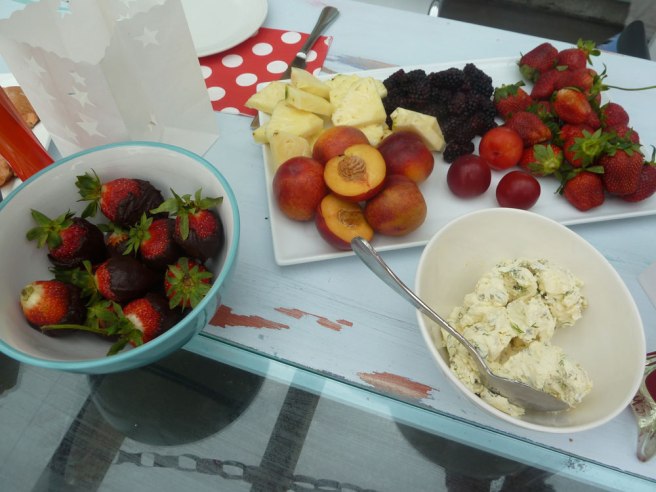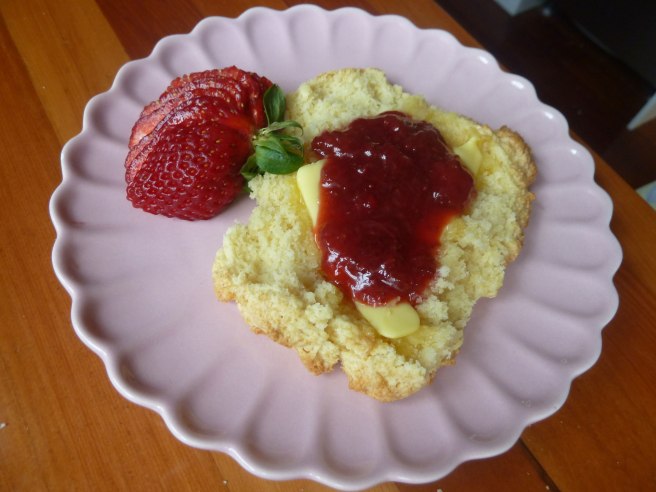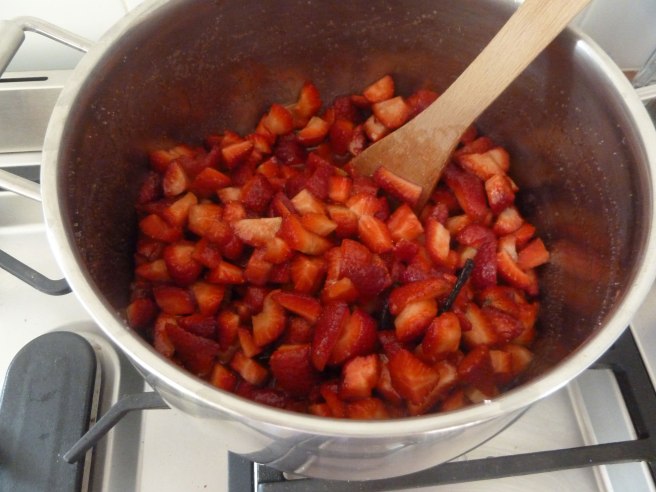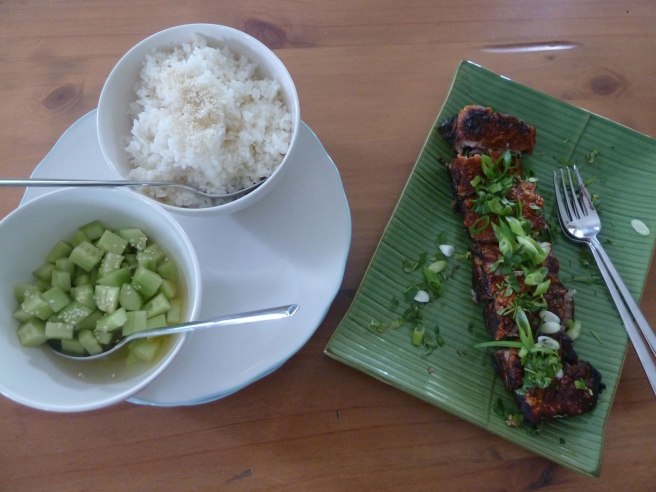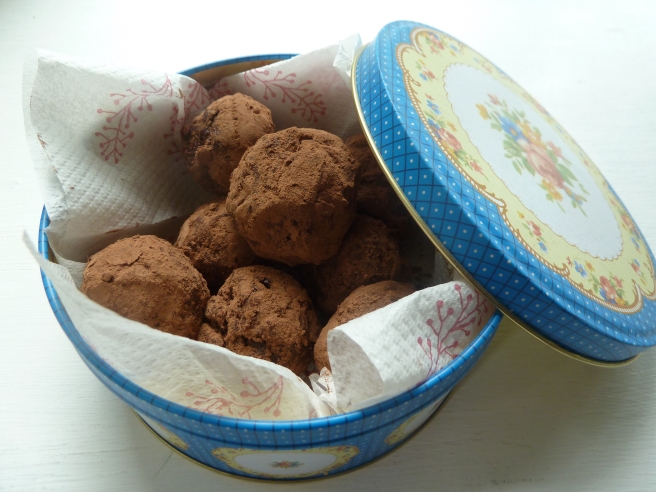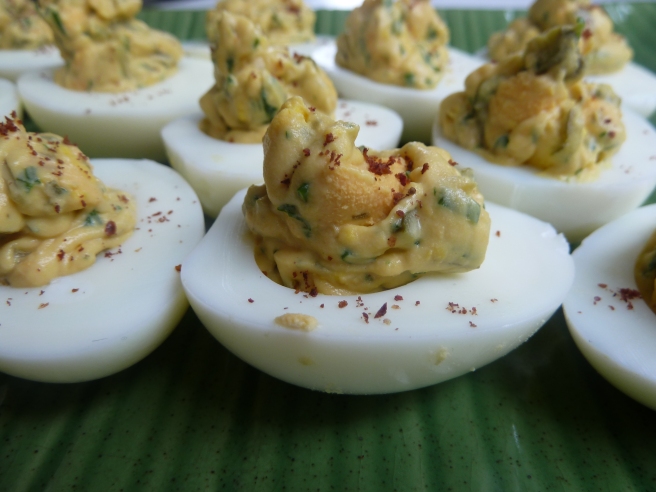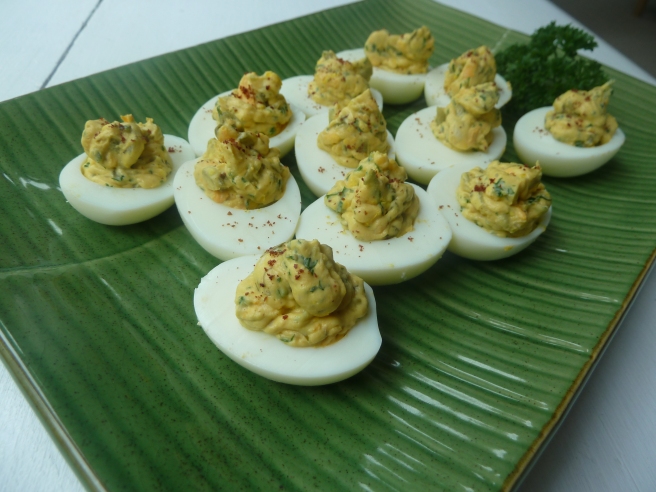For the last few weeks I’ve been very busy, diligently feeding my new friend. He’s a little jar of flour, water, yeast and gas, and he’s been growing bigger and stronger every day with each feed. He’s a natural sourdough starter – and he’s my very own, unique to me and my kitchen (and my kitchen’s wild yeasts). He eats a mix of rye and wheat flour (though he really prefers just rye, if he’s allowed it), and he drinks filtered room-temperature water. I guess you could call him rather particular in his tastes, but I indulge him anyway.
Last week I took out a little piece of my new friend and I carefully feed and grew that piece into a foamy, sweet smelling sponge. No doubt about it, making sourdough from scratch is a labour of love. It’s not particularly labour intensive, but there are little tasks that need to be completed as part of a strict schedule over a period of days, and it takes a looooooooong time (roughly three days from start to finish for proving, shaping and baking a loaf, and the starter itself takes around 7-10 days to reach ‘bakeability’ – that’s a word, right??!) but you just have to be patient. You can’t rush it. Believe me – I tried to rush it, and the flat, pancake of a loaf I ended up with made me realise it wasn’t worth hurrying the process.
Luckily, if you don’t rush it, the results can be quite astounding, and more than worth the effort.
I followed the very visual and detailed instructions on the amazing FoodTravelThought blog – I highly recommend this blog for some light reading if you’re thinking about having a go yourself, the pictures will have you salivating. I also watched a few YouTube videos to try and master the very strange stretching technique employed with Sourdough to strengthen the gluten in the dough – as opposed to more traditional kneading. I also watched a few videos on how to shape the dough into the traditional ‘boule’ shape… which I have by no means mastered yet!!
The cooking of Sourdough is a bit different from regular bread too, it’s very hot and quite long, but that’s how you get those extra crunchy little burnt bits on the top. I had to ignore all my instincts telling me that the bread was burning, in order to leave it in the oven for the full cooking time. But the loaf I made where I actually followed the instructions and timings to the letter was so much better than my first attempt were I fudged, changed and tried to speed things up, that I am now a convert to following the detailed process carefully – those instructions are there for a REASON. Even harder than the long cooking time, was the long waiting to cool time – ONE HOUR! It’s almost a form of torture to see that gorgeous loaf lying there on the bench, the smell wafting gently through the house, and knowing you have another 35 minutes to wait till eating time… believe me, I’ve been there.
And just to really get your mouth watering… I’ve just had a thick slice of my wonderful sourdough bread with lashings of smoked aubergine hummus (homemade of course!) and it was truly a revelation. This is eating! I’m not sure I could ever eat store made ‘sour dough’ again after having the real thing.
